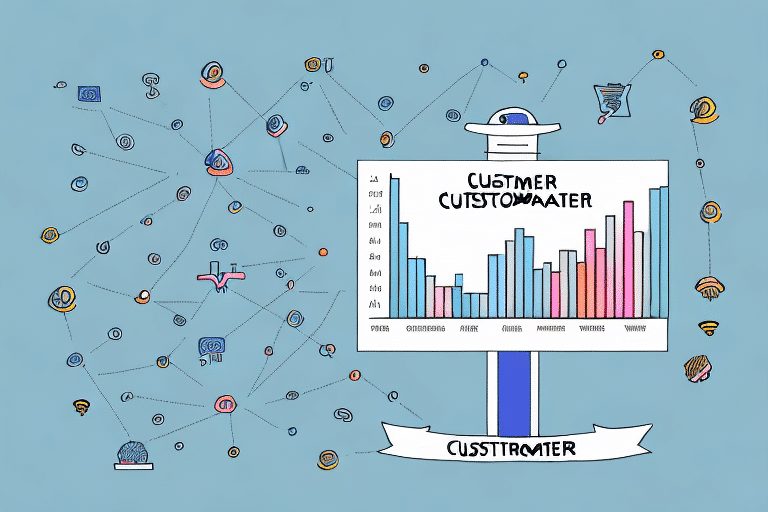Understanding the Importance of Customer Retention
In today's highly competitive business environment, maintaining a strong customer base is crucial for the success of any organization. Customer retention focuses on keeping your existing customers engaged and satisfied with the products or services you offer. It's a long-term strategy that builds loyal and repeat customers who continue to do business with your organization.
Retaining customers is essential because it directly impacts revenue and profitability. According to a Harvard Business Review study, increasing customer retention rates by just 5% can boost profits by 25-95%. Additionally, repeat customers tend to spend more, with approximately 67% of customers increasing their spending on subsequent purchases.
Moreover, high customer retention rates lead to positive word-of-mouth marketing. Satisfied customers are more likely to recommend your business to friends and family, attracting new customers without the need for expensive advertising campaigns.
The Economics of Customer Retention
Customer retention offers significant economic benefits for businesses. It's generally more cost-effective to retain existing customers than to acquire new ones. Loyal customers are also less price-sensitive, making them more likely to purchase additional products and services.
Research indicates that acquiring a new customer can be five to twenty-five times more expensive than retaining an existing one. Furthermore, loyal customers contribute to a stable revenue stream and can help businesses navigate economic downturns by maintaining their purchasing behavior during tough times.
Implementing effective retention strategies, such as personalized marketing campaigns and loyalty programs, can lead to sustained profitability and a strong market position.
Balancing Customer Retention and Acquisition
While customer acquisition is vital for business growth, customer retention is equally important. It's more cost-effective to sell to an existing customer than to acquire a new one. However, businesses should strive to maintain a balance between both to ensure sustained growth.
Customer acquisition focuses on attracting new customers to try your products or services, whereas customer retention aims to keep them satisfied and engaged. Achieving a balance between the two can significantly increase customer lifetime value, leading to a more sustainable business model.
One effective way to improve customer retention is by providing exceptional customer service. This includes promptly addressing customer inquiries and complaints, offering personalized solutions, and exceeding customer expectations. Building strong relationships through regular communication, such as email newsletters or social media updates, also fosters loyalty.
Calculating and Measuring Customer Retention Rate
Understanding your customer retention rate is essential to evaluate the effectiveness of your retention strategies. It measures the percentage of customers who continue to do business with your organization over a specific period.
The formula for calculating customer retention rate is:
Customer Retention Rate = ((CE - CN) / CS) x 100
Where:
- CE = Number of customers at the end of a given period
- CN = New customers acquired during the same period
- CS = Total customers at the start of the given period
A high customer retention rate indicates effective retention strategies and strong customer loyalty, while a low rate may signal the need to improve customer service or product offerings. Regularly tracking and analyzing retention metrics allows businesses to identify weaknesses and implement targeted improvements.
Customer Retention Strategies by Industry
Retail Industry
In the retail sector, customer retention strategies focus on creating personalized experiences, fostering loyalty, and providing exceptional customer service. Best practices include:
- Implementing loyalty programs to incentivize repeat purchases
- Personalizing customer experiences through targeted marketing campaigns
- Engaging with customers on social media platforms
- Offering promotions and discounts to encourage purchases
Using data analytics and machine learning to provide personalized product recommendations based on purchase history can also enhance customer satisfaction and loyalty.
Service Industry
For service-based businesses, retention strategies focus on delivering excellent customer service, keeping customers engaged, and fostering loyalty. Effective strategies include:
- Offering personalized services to increase customer satisfaction
- Providing incentives for customers who refer new clients
- Sending personalized communications regularly
- Offering after-sales support and follow-ups to ensure customer satisfaction
Creating loyalty programs that offer exclusive discounts and rewards can further differentiate your business and attract repeat customers.
Healthcare Industry
In healthcare, patient satisfaction, quality of care, and effective communication are key to retention. Strategies include:
- Ensuring timely appointments and prioritizing patient experience
- Regularly communicating with patients to address their needs
- Providing comprehensive information and involving patients in their care
- Soliciting patient feedback to improve quality of care
Offering payment plans or financial assistance can also help retain patients who may be concerned about the high cost of medical care.
Technology Industry
For technology companies, retention strategies emphasize customer experience, product innovation, and exceptional support. Key strategies include:
- Providing regular software updates and product enhancements
- Offering excellent customer support across various channels
- Providing training to ensure successful product implementation
- Proactively solving customer issues to maintain a positive experience
Best Practices for Customer Retention
Implementing best practices can significantly enhance customer retention efforts across all industries:
- Personalize Customer Experiences: Use data to tailor interactions and offers to individual customer preferences.
- Implement Loyalty Programs: Reward repeat customers with discounts, exclusive offers, or rewards points.
- Enhance Customer Service: Provide timely and effective support to address customer needs and resolve issues.
- Engage Through Multiple Channels: Maintain consistent communication via email, social media, and other platforms.
- Solicit and Act on Feedback: Regularly gather customer feedback and make improvements based on their suggestions.
Future Trends and Predictions in Customer Retention
The future of customer retention is being shaped by advancements in technology and changing customer expectations. Key trends include:
- Personalized Customer Experiences: Leveraging AI and machine learning to deliver highly customized interactions.
- Advanced Data Analytics: Utilizing big data to gain deeper insights into customer behavior and preferences.
- Omnichannel Communication: Providing seamless interactions across all customer touchpoints, including online, mobile, and in-store.
- Automation and AI: Implementing chatbots and automated systems to enhance customer service efficiency.
Staying ahead of these trends will enable businesses to develop more effective retention strategies that meet the evolving needs of their customers.
Building a Customer-Centric Culture
Creating a culture centered around the customer is essential for improving retention rates. This involves:
- Engaging employees in understanding the importance of customer retention
- Providing training and resources to empower staff to deliver excellent customer service
- Encouraging collaboration across departments to ensure a unified approach to customer satisfaction
- Fostering open communication channels between employees and customers
A customer-centric culture ensures that every aspect of the business is aligned towards enhancing the customer experience, leading to higher satisfaction and increased loyalty.
Conclusion
Customer retention is vital for building a loyal and satisfied customer base, which in turn drives revenue and profitability. By implementing effective retention strategies tailored to your industry, measuring success through key metrics, and fostering a customer-centric culture, businesses can achieve long-term success and maintain a competitive edge in the market.




















